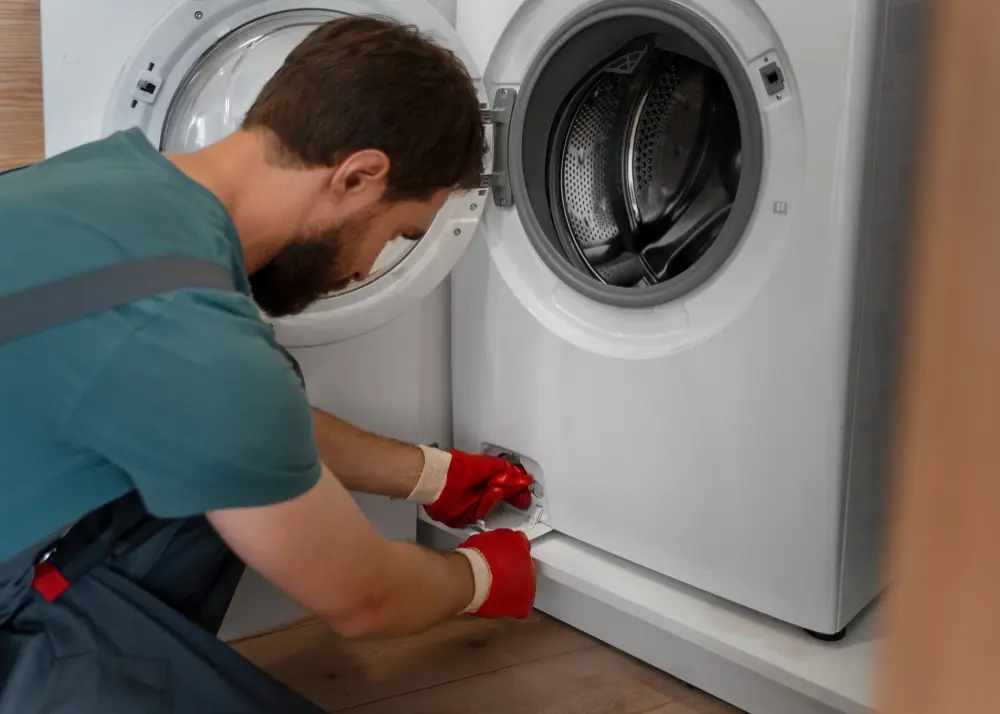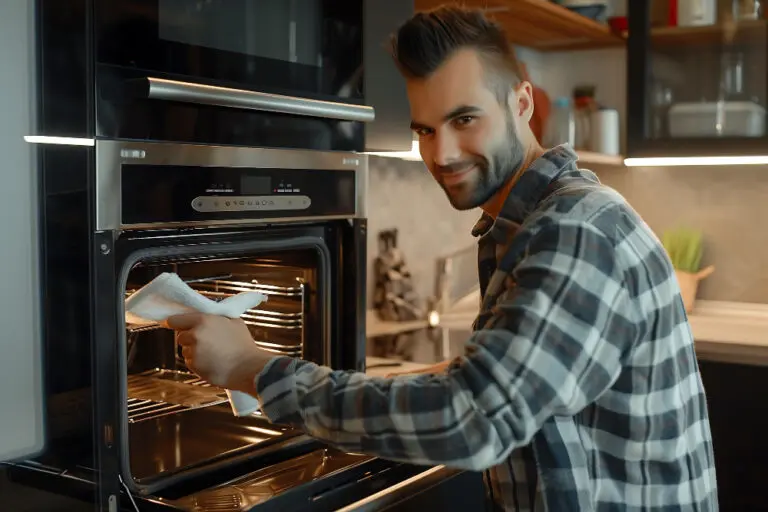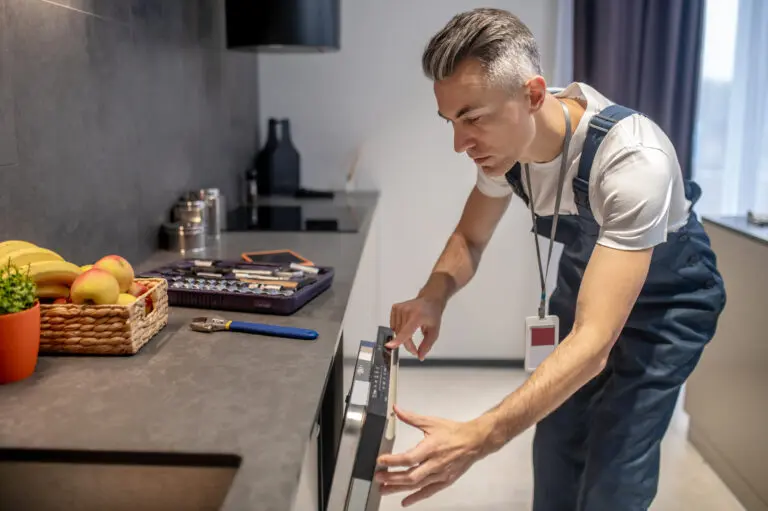Issues With Washer
How to fix common washing machine problems like power issues, drainage, spinning, and leaking, with simple and advanced solutions.
If your washing machine doesn’t respond when you turn it on there may be a simple fix. There’s a number of solutions that range for serious to simple, but the best place to begin is with the power supply itself.
Washer won’t turn on
Power
The first thing to check is if your washing machine is getting power.
Lid Switch or Door lock
Washing machines are designed to stop working when the lid is open. The lid switch is a small plastic piece located under the lid. In order for the switch to activate, the lid must be shut. Check to see if the switch is in good repair and properly positioned.
Timer Knob
Some models require the timer knob to line-up exactly with the control panel graphics. If the knob is slightly out of alignment, the washer won’t run. To check this, simply advance the timer and try to restart the washer again.
Water is turned off
The control board needs to be reset
Motor
If in the middle of the cycle washer stops draining or washing, the issue might be a main motor or drain pump motor.
Washer not draining properly or not draining at all and not spinning
Drain Hose
Many times a clogged drain hose is the reason your washer isn’t draining properly. Remove the hose and visually inspect it for clogs.
Drain Pump
If you suspect that your drain pump is jammed, you’ll need to drain your tub then disconnect and inspect the hoses for foreign objects. Don’t forget to check the pump inlets. You may need to remove the pump from the washer in order to get a good look.
If you are having problems with your pump, there’s a chance that it may have locked up and seized. The motor will continue to run and attempt to turn the pump. If the pump is belt-driven, the belt will burn through or break, there is even a chance that the pulley could break. Things can go from bad to worse if the motor continues to run with tension on the belt, which can cause the motor to seize.
Another possible issue could be that the bearings seized on the pump, or it may have become jammed by a pen, coin or sock. It’s also possible that the impeller blades have broken. In most cases, a new pump will fix the problem.
Check Door lock or door switch that can be defective and therefore it will prevent washer from draining.
Foreign Objects
If items such as socks, pens and coins get wedged between the basket and the tub, or become lodged in the pump, the washer’s ability to drain properly will be greatly reduced and even can come to a full stop. You’ll need to open the cabinet to gain access so that you can search for any obstructions.
Detergent
If too much detergent is used there will be far too many suds. Too many suds will prevent the washer from draining in a timely manner and the error messages will come up on some models with the display indicationg suds or long drain.
There’s a number of things that can prevent your washer from spinning correctly. Unfortunately, you’ll most likely need to open the cabinet in order to properly troubleshoot the problem. Let’s start with the easy fixes first, because sometimes the problem is as simple as the washer being in a soak cycle!
Too Large of Loads
A washing machine will become unbalanced if there are too many clothes being washed in the same load. An overloaded machine will become unbalanced and not properly spin. This can also occur if the clothes are not evenly distributed within the basket.
If this is your problem, you’ll need to adjust the load during the cycle to help your washer balance. You can do this either by removing all of the clothes and replacing evenly within the basket or simply moving them within the basket so that they are evenly distributed.
Switches and Settings
The lid switch is located inside the cabinet near the door frame, and it’s designed as a safety precaution to keep hands from entering a spinning washer basket. A faulty switch will prevent the washer from running. If the switch is bad, it will need to be replaced.
You can also check the setting to ensure that the speed selector switch is properly positioned. It should not be set between different speeds.
Drain Pump
It’s possible that a foreign object is lodged in the drain pump. You’ll frequently hear a humming sound when the washer is full of water if this is your problem.
Belts
A washing machine has a number of belts and as they wear, they can show signs of damage and even break. If you notice a belt that is showing signs of wear, you should replace it with a new one.
If your problem was due to a broken belt, be sure the check that the pulley hasn’t seized. The belt may not have been the root problem. If the pulley seized, it will usually cause the belt to break. If you replace the belt, but not fix the pulley, you’ll have the same problem in the very near future.
Motor
The main drive motor is responsible for spinning and agitating the basket. The washer motor creates the spinning directly, and frequently with the use of a clutch. Within the washer’s transmission there’s a crank type gear with connecting rods that cause the basket agitate.
Top seal can cause bearings to rust and seize up and it will stop washer from spinning. In this case seal and bearings need to be replaced.
Possible Issues
- If there’s little or no agitation, the splines that connect the agitator to the drive shaft could be stripped and in need of replacement.
- In some washers a reversing motor is used. If you notice that your basket spins perfectly in one direction, but in the opposite direction it won’t work all you may need to replace the motor. Unless you are comfortable doing this, its probably best to contact a professional.
- A coupler is used to connect the motor to the transmission. Over time, this part will wear and need to be replaced.
- If you suspect a transmission or clutch issue, it’s generally best to contact a professional as these can be relatively complex problems.
Washing Machine is Leaking Water
Beyond the mess that a leaking washer makes, the problem doesn’t always mean an expensive repair bill. Many times the solution is an easy fix or an inexpensive part.
Drain Hose
When a washer leaks only during the spin cycle the likely cause is the drain hose.
Check the Following
- Check the connections on the hose to ensure they are secure.
- Check the condition of the drain hose, it should be free of cracks and damage.
- Check the drain hose for any clogs. You might just find your missing sock!
- Check the drain hose where it attaches to the washer. There should not be any cracks or leakage, if there is, you may be able to cut the end and re-clamp the hose. Although, you may want to consider purchasing a new one.
Fill Hose
The fill hoses or water supply hose could also be the culprit.
- Check that the fill hoses are in good repair and securely in place. (They should not be over-tightened).
- If washer is leaking without even being used, the problem is fill hose or water supply hose.
Water-Inlet Valve
Check the water-inlet valve for leaks. There may be a build-up of rust or mineral deposits within the valve, or it may be faulty and need to be replaced.
Too Much Detergent
If you have hard water and use a water softener, your leakage problem may be the result of over-sudsing. Hot- and soft-water use less detergent to effectively clean than cold- and hard-water. Reducing how much detergent you use may eliminate an over-sudsing issue.
When you have too many suds and they “spill over” it may appear that you have a leak. The sudsy overflow can be resolved by reducing the amount of detergent you’re using.
Door Seal (front-load)
Front-load washers frequently develop leakage around the door seal as this is a common area for debris to build-up. Over time, the build-up will reach a level where the door will not be able to properly seal and water will be able to seep out. Generally, you can solve this problem by carefully cleaning the seal.
Drain Pump
Drain pumps have a seal on the pulley that will often leak due to wear. Many pumps are designed with a weep hole allowing the water to drip out as the seal begins to fail. So, whether you find a small amount of water or a flood near your drain pump, you may have uncovered the source of the leak. The pump will need to be rebuilt or replaced.
Drains and Hoses
If you notice intermittent leaking when the washer is flushing, the problem may be with the plastic bleach dispenser. Bleach is an extremely corrosive chemical and it can cause plastic parts from the bleach dispenser to crack or even break off. In which case it will need to be replaced.
The use of large amounts of liquid chlorine bleach can pit and rust stainless steel components. Consider using oxygenating bleach. It’s less harsh for your washer, although it should be noted that it’s not as effective at getting your whites bright.
Tub
If the tub is the cause of your leak, you will need to replace the tub.
Tub Seal
The main tub seal is located where the outer tub connects to the transmission. If you suspect that this is your problem it is usually best to contact a professional as it can be a very difficult job to replace it.
Washer Does Not Dispense Detergent
If you have an automatic detergent dispenser there are two common issues that can cause this problem.
- The dispenser needs to be cleaned – Clean the dispenser monthly with a cup of warm distilled white vinegar. Pour the vinegar into the dispenser and run the washer thru a regular cycle. Any built-up residue or clogs will be flushed thru and your dispenser should work as good as new.
- Incorrect product – Using the right product can make all the difference in the world. If your washer was designed for liquid bleach, using a powder bleach can clog the dispenser and lines. Check your owners manual to find the type of product designed for your unit.
Washing Machine is Shaking and Moving
It might seem alarming when your washer is making noises and moving around, but the solution is generally pretty simple.
Not Level
If the floor isn’t level your clothes washer will definitely jump around. Many of the wash cycles, such as spin, can easily thru the unit into a shaking and banging mode, and if the washer is sitting on an uneven floor it will even add to the movement.
Fortunately, this is an easy fix. Position the washer on a piece of 3/4″ plywood. You can use shims if needed to bring the plywood to a level surface, but usually the plywood will do the trick.
Washer Feet Improperly Positioned
Washing machines are designed to be adjusted to the floor surface so that they sit level and do not rock. The 2 front legs have a leveling mechanism with a lock nut to secure it in place. Adjust each leg to the correct height and tighten the lock to keep the leg from moving. There shouldn’t be any movement in the front 2 legs once they are set.
The back 2 legs may have the same design as the front or they may be self-adjusting. If they are self-adjusting, tilt the washer forward onto it’s front legs so that the rear legs are roughly 3″ in the air. Then set the unit down to allow the legs to automatically adjust.
Load is Unbalanced
If your laundry is off balance you’ll need to open the washer and adjust the load. You may need to make a couple of attempts in order to get it balanced again.
Washing too many clothes in a load can exceed the maximum load weight and cause the washer to go off-balance. Check your owners manual for load size recommendations, but as a general rule, the clothes shouldn’t be packed too tightly allowing them room to move freely.
Washing Machine is Noisy
A noisy washer could be as simple as a foreign object being somewhere it shouldn’t, or it could be a clue that a part needs to be replaced. First rule out the simple fixes, which are listed below, and then read our extensive article on the causes and solutions for a noisy washer.
Gurgling
A gurgling sound could be an indication that something is obstructing the drain line, but not enough to fully clog the hose. Remove the blockage to prevent it from becoming a full blown clog which will most likely cause a flood.
Clicking
If you hear a clicking sound you may have an object lodged in the washer drain. You may have inadvertently missed a coin or other item left in a pocket. Check your drain and remove any foreign objects.
Buzzing or Humming
A foreign object may be lodged in your pump if you are hearing a humming or buzzing noise. If an object finds it’s way into the pump it’s not uncommon for the pump to jam. You may need to replace your pump if there was serious damage, but often just removing the object will solve the problem.
Washer Smells
It’s not uncommon for a washer to develop a musty or mildew smell. This can occur either in or around the appliance, and it’s an indication of mold and bacteria growth. The washer tub provides a perfect dark, moist area for mold and bacteria to thrive.
All washers develop what is called a “bio-film” which is decaying matter that’s always damp. Some washers are more prone to this build-up than others. Over time it’ll begin to smell and if left untreated, the smell can spread into your laundry. In worst case situations, it can even cause the laundry room and other nearby rooms to smell. Read our article on how to remove this odor from your washer.
A good habit to develop is to clean your washing machine every month, and be on the lookout! Periodically check the area around your washer for mold or mildew. If your walls, cabinets or other areas show signs of mold or mildew growth there may be an issue with moisture that needs to be addressed.
Detergent
- Too much detergent will create excessive suds and a dirty residue will build within the basket and other washer parts.
- Use the correct amount of detergent and fabric softener. This is probably the best defense simply because it’s actually limiting the food supply.
Temperature
- Hot water will help dissolve the layer of bio-film. A hot soak or wash on your final load can be a great preventative measure, especially if you prefer washing in cold water.
- If you have a reoccurring mold problem or you don’t use your washer frequently, you can run a second rinse cycle when you’re doing laundry to help prevent mold and mildew growth.
Drain Pump Filter
The drain pump filter should be cleaned once a month, but few homeowners perform this task unless there’s a problem. Frequently coins and other small items get caught in this filter and cause the water flow to slow creating an ideal location for mold and mildew growth.
Washing Machine Won’t Finish it’s Cycle
This is an easy problem to troubleshoot. If your washer continues running even after the cycle should have finished, it most likely means that the timer is defective.
Remove the control panel and check the timer contacts for corrosion or scorching. A new timer will fix this problem.
Need Professional Help?
If you haven’t been able to fix the problem with your appliance on your own, don’t worry. Our experienced technicians are ready to help.
Don’t let minor problems turn into major breakdowns. Trust the repair of your appliances to professionals!








